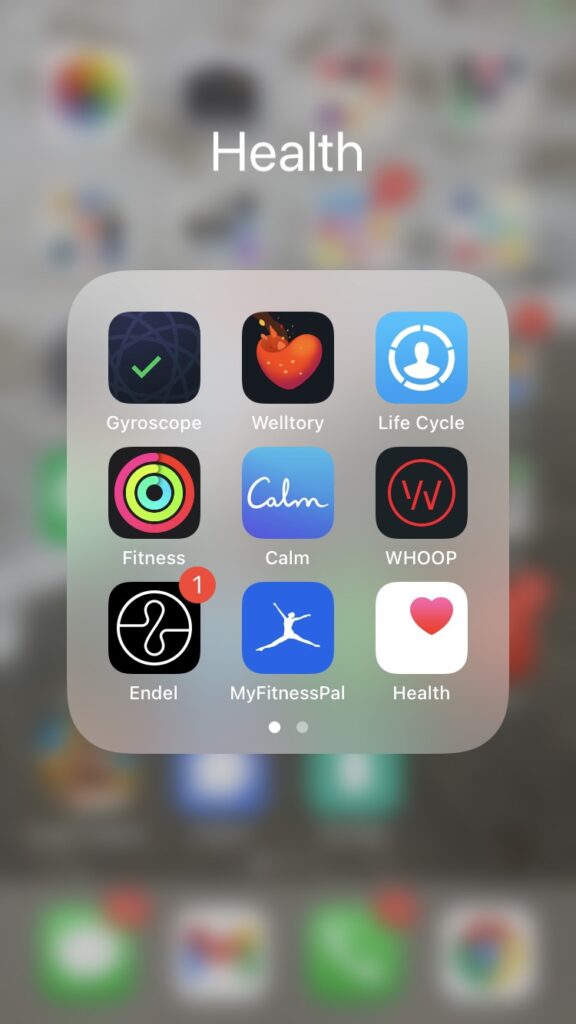Intrepid biohacker that I am, when I learned that my testosterone levels were concerningly low, I began on a program to raise them.
I started with nutrition and supplementation but I already had a diet and supplement routine that was evidence based for raising testosterone levels in women.
I added in DHEA (Dehydroepiandrosterone) at 25mg. Six months of that brought me up to just about half of the lowest baseline acceptable. I was NOT getting adequate results.
My physician prescribed me a cream from a compound pharmacy which unfortunately didn’t agree with my skin. So we were going to get creative.
I had read a blog post from Cate Hall (whose husband Sasha Chapin had helped me on another entirely different vector of my life) on how testosterone pellets changed her life.
She had had teeny tiny testosterone pellets placed into her subcutaneous fat and had remarkable results in terms of energy and focus. This and that happened, and the summer was a mess, but today was the day I finally followed in her footsteps.
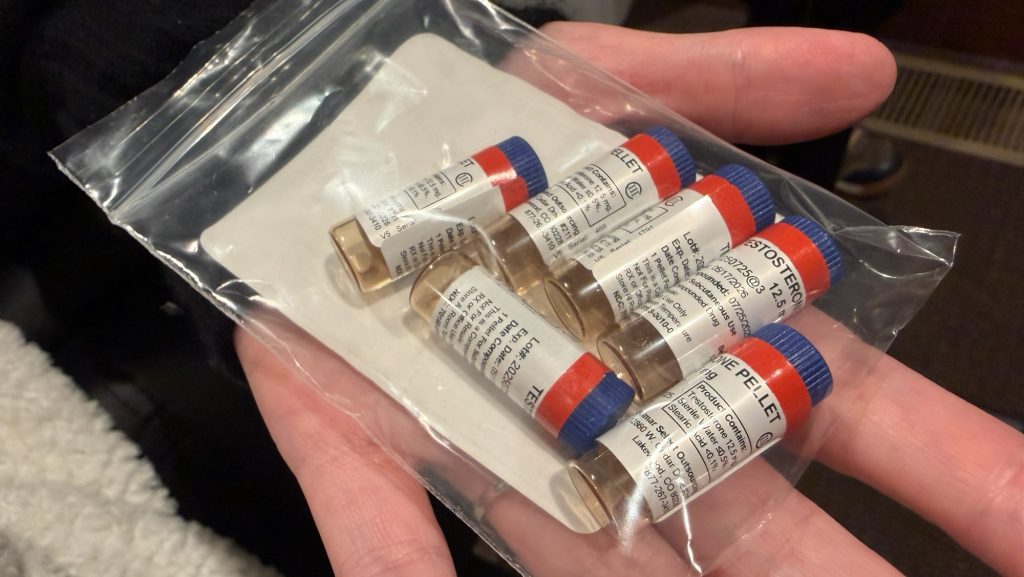
We’re started me with 10mg of estradiol (range 6-25mg with 8-10mg being most common), and 75mg of testosterone (range 50-150mg with the most common being 75-100).
We’ll aim for labs at 4-6 weeks after insertion which would represent peak levels. We will repeat dosing at 3-6 month intervals. We will check levels at 4 months or so, or earlier if I feel the effects waning.
Do be warned that within a paragraph or so, there will be images of needles, scalpels, and some blood. So feel free to not scroll down further.
Part of the difficulty with dosing this stuff is that the pellet doses are wonky and frequently out of stock – estradiol comes in 6mg and 10mg increments so 8mg is impossible.
Naturally, we’ve made surprisingly little progress when it comes to women’s health, particularly as it relates to hormones.
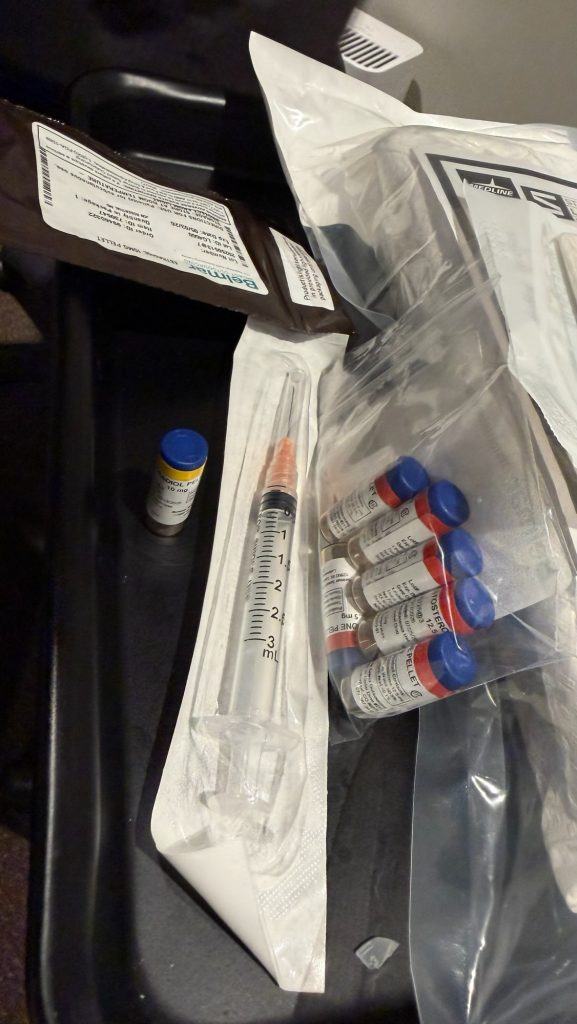
But as I am happy to be a guinea pig and my luteal phase is a mess of migraines and misery I figured I had little to lose and much to gain. I was the first patient my doctor has done the procedure on so if anyone in Bozeman is interested, you can confidently give it a go with him as I’ve survived it.
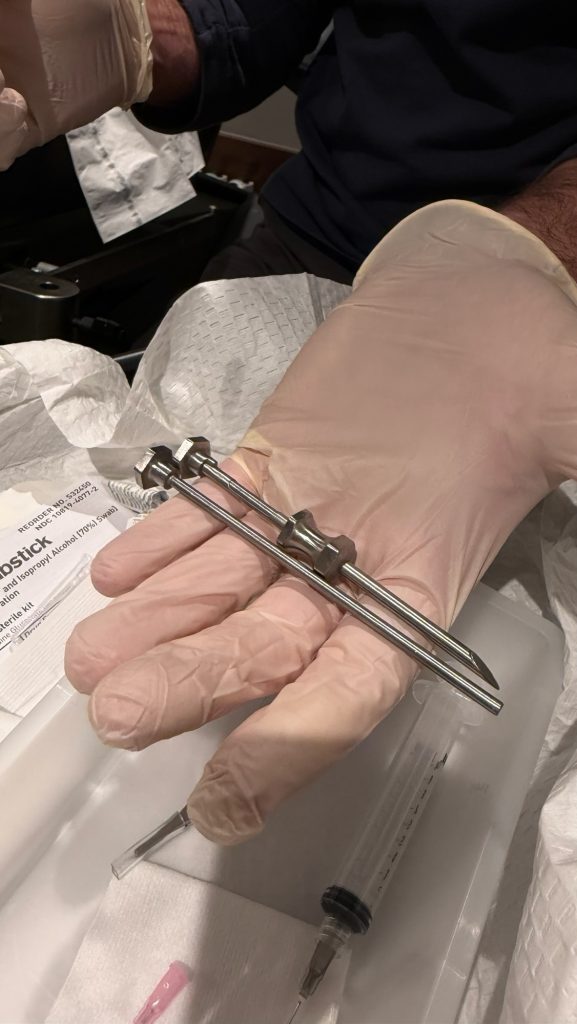
I was given a local numbing agent with epinephrine. I needed a surprising amount of it but I was a bit nervous. Once I was just able to feel pressure and no pain it was time to make a small incision with a scalpel and in popped the tiny bit of hormone on the left butt cheek.
No big deal at all.
But if you don’t want to see it going in don’t scroll.
Just giving you space to turn back.
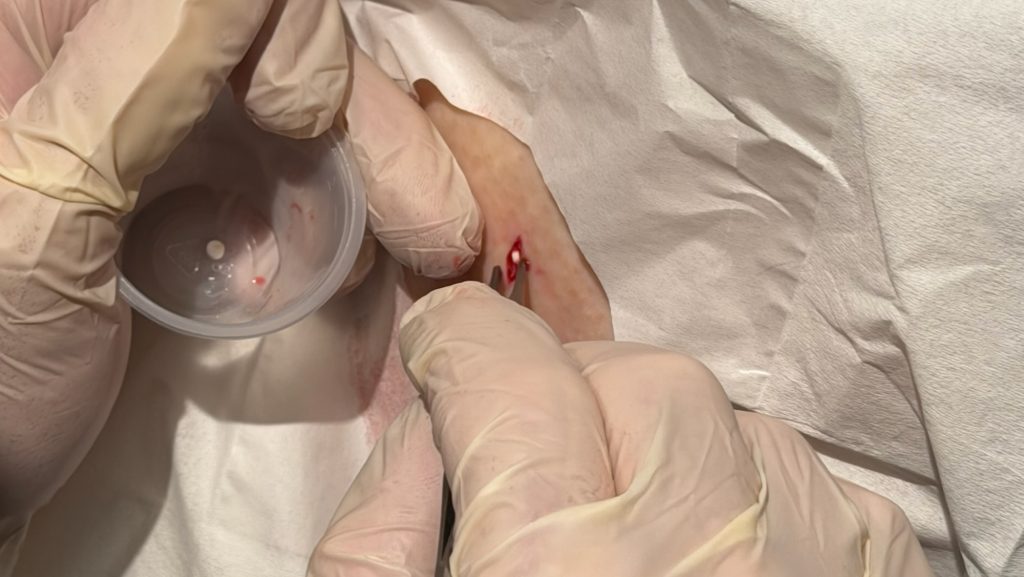
I am all bandaged up and still riding the cortisone of it all but I feel alright. I’ll be adding in progesterone orally to temper the estrogen as that’s another matter. I’m excited to report back on it as if I have even a fraction of Cate’s experience with it I’ll be quite happy. Also it’s about $70 a month so not cheap but not at all expensive for something that could potentially mitigate some long term issues I’ve struggled with for years.


